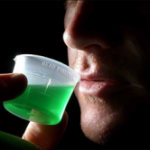Opiate Addiction Treatment, the Risk of Relapse and the Need for Suboxone Treatment Help
Going through drug treatment can be a trying ordeal considering the drastic changes that take place at the start of the recovery process. While 30- and 60-day treatment programs can go a long way towards helping a person establish a drug-free lifestyle, the aftereffects of chronic opiate abuse can last considerably longer than the duration of a treatment program.
Also at issue is the high rate of relapse recovering addicts face after completing drug treatment, especially for people coming off long-time addiction problems. As one of a handful of medication-assisted therapy treatment approaches, Suboxone treatment offers the level of physical support needed to sustain a person’s recovery efforts and enable long-term abstinence in recovery.
The Effects of Long-Term Opiate Abuse

Long-term opiate abuse causes chemical changes in the brain.
Opiate drugs, such as heroin and prescription pain medications, act as depressants, slowing down chemical processes throughout the body. These characteristics account for their pain-relieving properties.
Opiate effects start in the brain at individual cell sites. With each dose, opiates force the release of large amounts of neurotransmitter chemicals, most notably dopamine, serotonin and norepinephrine. As neurotransmitters flood the brain and central nervous system, they block pain sensations from reaching the brain.
According to the Journal of Addiction Science & Clinical Practice, with frequent drug use, opiate interactions cause chemical imbalances to form in the brain. With long-term opiate abuse, the brain comes to rely on the presence of opiates to function normally. Before long, this state of chemical imbalance becomes self-sustaining to the point where the brain takes on a new configuration in terms of overall structure and chemical makeup.
Opiate Addiction Aftereffects in Recovery
During the course of opiate addiction treatment, the brain is left to pick up where opiate effects leave off, which accounts for the severe withdrawal and overall state of fatigue and depression recovering addicts experience. For people coming off chronic opiate addiction problems, brain cells have undergone considerable damage and often take months or even years to resume normal chemical functions. Under these conditions, the potential for relapse runs incredibly high as those in recovery are left to endure ongoing withdrawal and drug cravings effects.
Suboxone Treatment Benefits
Suboxone, a synthetic opiate drug, produces some of the same effects as other opiate drugs minus the high addiction potential. Suboxone contains the synthetic opiate, buprenorphine and naltrexone, an antagonist opiate drug.
The buprenorphine ingredient works to restore a normal chemical balance in the brain by supporting damaged brain cell functions. The naloxone ingredient acts as an anti-abuse deterrent by deactivating Suboxone’s effects in the event the drug is snorted or injected.
In effect, Suboxone treatment offers recovering addicts much needed relief from withdrawal and drug cravings effects, allowing them to feel normal again, according to the National Institute on Drug Abuse. These effects go a long way towards supporting a person’s efforts to maintain abstinence in recovery.
The Need for Suboxone Treatment
Anyone who’s relapsed shortly after completing opiate addiction treatment well knows how disheartening it can be. The feelings of failure and helplessness that come with relapse can easily thwart a person’s motivation to get well. Suboxone treatment can provide the needed level of physical support to help you maintain abstinence on a long-term basis.
If you or someone you know is having an especially difficult time overcoming drug-using urges in recovery and are considering Suboxone treatment, please don’t hesitate to call our toll-free helpline at 888-646-0865 (Who Answers?) for information on programs in your area.





